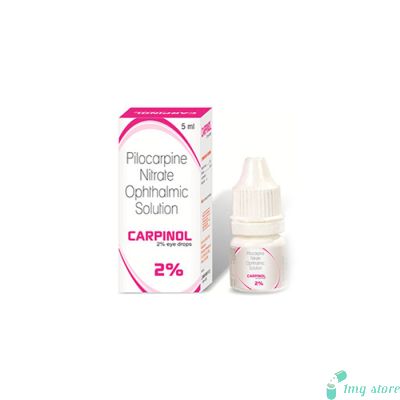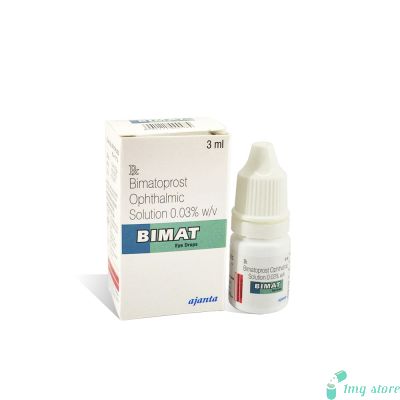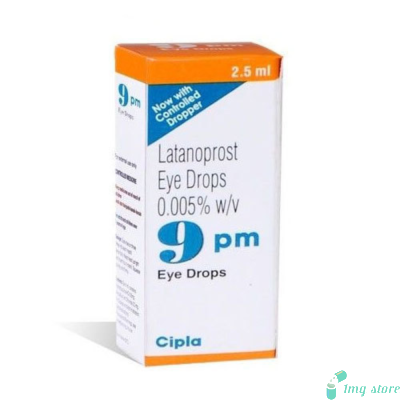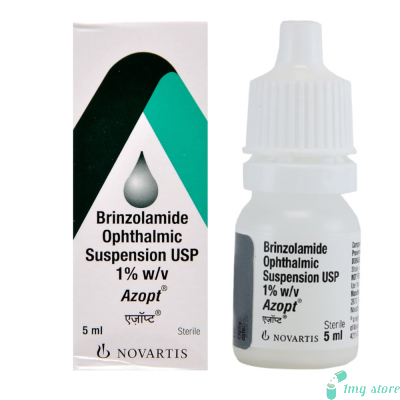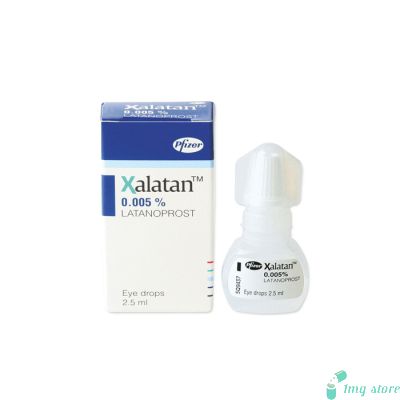Pilocar Eye Drops (Pilocarpine)
Pilocar Eye Drops (Pilocarpine), Pilocarpine Eye Drops, commonly known by the brand names Pilocar and Isopto Carpine, are a medication primarily used in the management of glaucoma.
Information About Pilocar Eye Drops (Pilocarpine)
Pilocarpine Eye Drops, commonly known by the brand names Isopto Carpine, and Pilocar are a medication primarily used in the management of Glaucoma. This medication belongs to the class of drugs known as cholinergic agonists. It works by stimulating the parasympathetic nervous system, causing the contraction of the pupil and facilitating the drainage of aqueous humor from the eye. This mechanism of action helps reduce intraocular pressure (IOP) and is beneficial in conditions such as open-angle glaucoma and ocular hypertension.
In this comprehensive guide, we will delve into various aspects of Pilocarpine Eye Drops, including dosage information, missed dose and overdose considerations, common uses, potential side effects, precautions to take while using the medication, and drug interactions. Additionally, we will highlight different formulations of Pilocarpine Eye Drops, with a focus on preservative-free drop options. You can conveniently purchase Pilocarpine Eye Drops at our website, 1mgstore.com, for effective glaucoma management.
Dosage Information for Pilocarpine Eye Drops
Initial Dosage: The recommended starting dosage of Pilocarpine Eye Drops typically involves applying one drop of the solution into the affected eye(s) two to four times daily. The exact frequency and dosage may vary depending on the severity of the condition and the patient's response to the medication.
Titration: It is essential to titrate the dosage carefully under the supervision of a healthcare professional to achieve optimal therapeutic effects while minimizing side effects. Dosage adjustments should be made gradually to determine the lowest effective dose.
Missed Dose: If a dose is missed, it should be administered as soon as the patient remembers. However, if it is close to the time for the next scheduled dose, the missed dose should be skipped to avoid doubling up. Patients should not use extra doses to make up for missed ones, as this can lead to unwanted side effects.
Overdose: Overdosing on Pilocarpine Eye Drops can result in excessive side effects, including severe headache, nausea, vomiting, sweating, and increased salivation. In case of an overdose, it is crucial to seek immediate medical attention. Overdose management may involve the administration of specific antidotes or supportive care as deemed necessary by a healthcare provider.
Geriatric and Pediatric Dosage: Dosage adjustments may be required for geriatric and pediatric patients, as their response to the medication can differ. Healthcare providers should closely monitor these patient populations to ensure safety and efficacy.
Pilocarpine Formulations:
Pilocarpine Eye Drops are available in various formulations to cater to different patient needs. These formulations may vary in terms of concentration, preservatives, and packaging. Your healthcare provider will choose the most suitable formulation based on your eye condition and individual requirements.
Buy Pilocarpine Eye Drops:
You can conveniently purchase Pilocarpine Eye Drops, including various formulations, at reputable pharmacies or online platforms like 1mgstore.com. Ensure you obtain these drops with a valid prescription from a qualified healthcare provider to ensure their safe and appropriate use in managing your eye condition.
Some of the precautionary measures to be taken while using Pilocar Eye Drops (Pilocarpine)
- Allergies: Patients with known allergies to Pilocarpine/Isopto Carpine or other cholinergic medications should inform their healthcare provider before using Pilocarpine Eye Drops.
- Eye Conditions: Individuals with certain eye conditions, such as iritis or uveitis, should exercise caution when using Pilocarpine Eye Drops. The medication may exacerbate inflammation in some cases.
- Systemic Disorders: Pilocarpine can affect systemic functions, particularly at higher doses. Patients with cardiovascular conditions, asthma, or gastrointestinal disorders should use this medication with caution and under medical supervision.
- Contact Lenses: Contact lens wearers should remove their lenses before using Pilocarpine Eye Drops and wait at least 15 minutes before reinserting them. The preservatives in some formulations can damage contact lenses.
- Pregnancy and Breastfeeding: Pregnant or breastfeeding individuals should consult their healthcare provider before using Pilocarpine Eye Drops, as the safety of the medication during pregnancy and lactation has not been firmly established.
Identifying the crucial functions of Pilocar Eye Drops (Pilocarpine)/Isopto Carpine
- Glaucoma Management: Pilocarpine Eye Drops are primarily used to lower intraocular pressure (IOP) in patients with open-angle glaucoma and ocular hypertension. By promoting the drainage of aqueous humor, these Eye drops help reduce the risk of optic nerve damage and vision loss associated with elevated IOP.
- Angle-Closure Glaucoma: In some cases, Pilocarpine Eye Drops may be used in conjunction with other medications or procedures to manage angle-closure glaucoma, a condition characterized by a sudden increase in IOP due to the narrowing of the drainage angle within the eye.
- Pupillary Constriction: Due to its mechanism of action, Pilocarpine Eye Drops can also be used to induce pupillary constriction during ophthalmic procedures, such as cataract surgery, to facilitate surgical access and reduce complications.
- Treatment of Accommodative Esotropia: Pilocarpine Eye Drops may be prescribed to treat accommodative esotropia in pediatric patients by inducing accommodation and reducing eye misalignment.
- Off-Label Uses: In some cases, healthcare providers may prescribe Pilocarpine Eye Drops for off-label uses, such as managing dry mouth (xerostomia) caused by radiation therapy or certain medications.
A few of the subsequent impacts stemming from Pilocar Eye Drops (Pilocarpine)
- Ocular Irritation: Common side effects of Pilocarpine Eye Drops include burning, stinging, itching, and redness in the eyes. These symptoms are usually mild and transient.
- Blurred Vision: Patients may experience temporary blurred vision after applying the eye drops. It is essential to avoid activities that require clear vision, such as driving until vision clears.
- Headache: Some individuals may develop a headache, which is typically mild and short-lived. If headaches persist or worsen, patients should consult their healthcare provider.
- Systemic Effects: Pilocarpine can cause systemic side effects such as sweating, increased salivation, and gastrointestinal discomfort. These side effects are more common with higher doses.
- Allergic Reactions: Although rare, allergic reactions to Pilocarpine Eye Drops can occur. Symptoms may include swelling, itching, rash, and difficulty breathing. Any signs of an allergic reaction should be reported to a healthcare provider promptly.
Answers to Common Inquiries About Pilocar Eye Drops (Pilocarpine)
FAQ 1: Are Pilocarpine Eye Drops safe for long-term use?
Answer: Pilocarpine Eye Drops are generally safe for long-term use when prescribed by a healthcare professional. However, continuous use may lead to tolerance or decreased effectiveness. Regular eye check-ups are essential to monitor your eye health and treatment progress.
FAQ 2: Can I use Pilocarpine Eye Drops with other glaucoma medications?
Answer: Yes, Pilocarpine Eye Drops can be used in combination with other glaucoma medications, but it's crucial to follow your healthcare provider's recommended dosing schedule to maximize their effectiveness and minimize potential interactions.
FAQ 3: Are preservative-free Pilocarpine Eye Drops available?
Answer: Yes, preservative-free formulations of Pilocarpine Eye Drops are available. They are suitable for individuals with sensitivity to preservatives or those who use contact lenses, as they reduce the risk of lens damage.
FAQ 4: Can Pilocarpine Eye Drops be used during pregnancy and breastfeeding?
Answer: Pregnant or breastfeeding individuals should consult their healthcare provider before using Pilocarpine Eye Drops, as their safety during these periods is not firmly established. A healthcare provider can assess the potential risks and benefits.
FAQ 5: Can Pilocarpine Eye Drops treat dry eyes?
Answer: Pilocarpine Eye Drops are not typically used to treat dry eyes. They are primarily indicated for glaucoma management. If you have dry eye symptoms, speak to your healthcare provider for appropriate treatment options, which may include artificial tears or other lubricating eye drops.
Significant Drug Interactions that Require Attention For Pilocar Eye Drops (Pilocarpine)
- Beta-Blockers: Concurrent use of Pilocarpine Eye Drops with beta-blockers (e.g., timolol) may lead to increased systemic absorption of both medications, potentially causing cardiovascular side effects. Healthcare providers should monitor patients closely when these drugs are used together.
- Anticholinergic Medications: Medications with anticholinergic effects, such as some antidepressants and antihistamines, may counteract the effects of Pilocarpine Eye Drops. Patients using both types of medications should be carefully monitored for therapeutic efficacy.
- Systemic Cholinergic Agonists: The concomitant use of Pilocarpine Eye Drops with other systemic cholinergic agonists may increase the risk of systemic side effects. Healthcare providers should assess the potential benefits and risks in such cases.
- Ophthalmic Anesthetics: Using Pilocarpine Eye Drops with ophthalmic anesthetics can lead to reduced effectiveness of Pilocarpine, as anesthetics may block its action. Therefore, these medications should be administered at different times.
- Other Glaucoma Medications: When using Pilocarpine Eye Drops in combination with other glaucoma medications, patients should follow a specific dosing schedule as recommended by their healthcare provider to maximize the benefits of each medication while minimizing potential interactions.
| Manufacturer | : | FDC Ltd |
| Equivalent Brand | : | Isopto Carpine |
| Generic Search | : | Pilocarpine |







